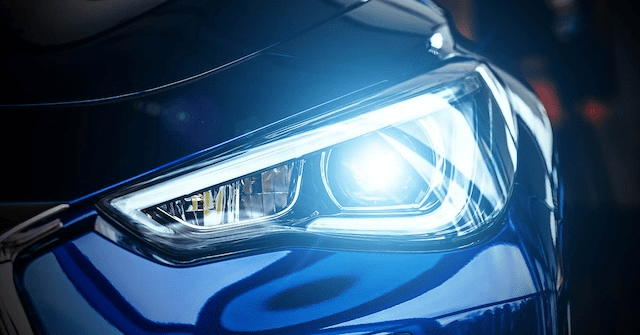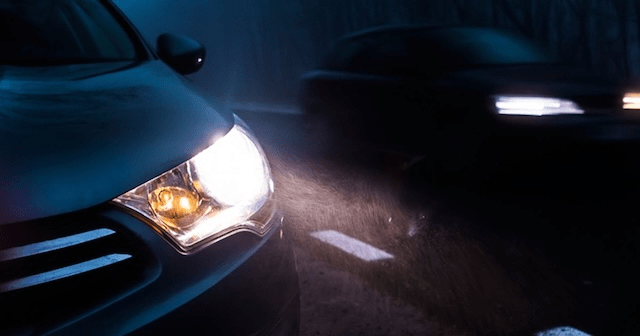In the modern automotive world, LED headlights have become a symbol of innovation and efficiency. Known for their crisp brightness, energy savings, and long lifespan, these lights seem like the perfect upgrade from traditional halogen bulbs. Yet, as they illuminate roads worldwide, many drivers are raising concerns about their overwhelming intensity. Are LED headlights too bright for safe driving? Let’s dive into the debate, explore the science, and look at possible solutions.
Why Are LED Headlights So Popular?

LED headlights have taken the automotive industry by storm, offering several advantages that appeal to manufacturers and drivers alike:
Unmatched Brightness: These lights provide a daylight-like beam, improving visibility during nighttime driving.
Energy Efficiency: LEDs use less power than halogen bulbs, making them eco-friendly and cost-effective.
Longevity: With a lifespan far exceeding traditional headlights, LED bulbs reduce the need for frequent replacements.
Despite these benefits, their intense brightness can pose challenges, particularly for other drivers on the road.
The Problem: Are LED Headlights Too Intense?
While LED headlights help drivers see better, their brightness can create discomfort and safety risks for oncoming traffic. Many drivers report feeling temporarily blinded when faced with overly bright LED beams, especially at night.
According to surveys, as many as 90% of drivers believe LED headlights are excessively bright, with some considering them hazardous. This growing concern has sparked debates on how these high-tech lights affect road safety.
Understanding the Science of Glare
What makes LED headlights so problematic? It’s not just their brightness—it’s how the human eye reacts to concentrated light beams.
Temporary Blindness: LED lights produce a sharp, white light that overwhelms the eyes, particularly in low-light conditions.
Slower Adjustment: The intense glare can make it harder for drivers to adapt to darker surroundings after passing an LED-equipped vehicle.
Delayed Reaction Times: Vision impairment caused by glare can increase the risk of accidents.
Mark Rea, a researcher from the Light and Health Research Center, explains that improper headlight alignment often worsens the problem. “It’s not the technology itself but how it’s used,” he notes.
Real Stories from the Road
For many drivers, the glare from LED headlights isn’t just an annoyance—it’s a daily hazard.

“I avoid driving at night,” says Sarah, a nurse from Ohio. “LED headlights are blinding. I’ve started limiting my nighttime drives because of the discomfort.”
Temporary Fixes: Drivers like James in Texas resort to wearing anti-glare glasses during night drives. “It helps a little,” he says, “but it’s not a long-term solution.”
These firsthand accounts highlight a recurring issue: while LED headlights improve visibility for their users, they often compromise the comfort and safety of others on the road.
The Role of Misaligned Headlights
Misaligned headlights are a significant contributor to glare issues. When improperly positioned, LED headlights don’t just light up the road ahead—they shine directly into the eyes of oncoming drivers.
How Misalignment Occurs
Manufacturing Errors: Improper installation during vehicle assembly.
Wear and Tear: Over time, headlight positions can shift, especially in SUVs and trucks with higher frames.
Neglected Maintenance: Many drivers overlook headlight alignment during routine vehicle servicing.
Regular alignment checks can significantly reduce glare-related problems, ensuring LED headlights enhance visibility without causing discomfort.
Can Adaptive Headlights Be the Solution?

Adaptive headlights, a cutting-edge innovation, may hold the key to balancing visibility and comfort. These systems adjust the beam’s direction and intensity based on driving conditions, reducing glare for other drivers.
However, adaptive headlights are still a luxury feature in most vehicles, limiting their widespread adoption. As technology becomes more affordable, these systems could play a vital role in addressing glare concerns.
Global Perspectives on LED Headlights
The debate over LED headlights is not confined to one region—it’s a worldwide issue. In the UK, for instance, 64% of drivers believe LEDs are excessively bright and could lead to accidents. Similar concerns have been voiced in the U.S., Canada, and across Europe.
This global consensus highlights the need for regulations and solutions that prioritize both safety and comfort.
How to Address LED Headlight Glare

While LED headlights aren’t going away, there are practical steps to reduce their impact on road safety:
Regular Headlight Alignment: Vehicle owners should check headlight alignment during routine maintenance. Proper positioning can make a world of difference.
Stricter Brightness Standards: Governments and automotive regulators can enforce stricter limits on headlight intensity, ensuring they don’t exceed safe levels.
Promoting Adaptive Technology: Encouraging the adoption of adaptive headlights could significantly mitigate glare issues.
Driver Education: Awareness campaigns can help drivers understand the importance of proper headlight maintenance and use.
Balancing Innovation and Safety
LED headlights were designed to enhance driving safety, but their unintended side effects have sparked legitimate concerns. Finding a middle ground between innovation and comfort requires collaboration between manufacturers, regulators, and drivers.
For now, the best approach is mindfulness on the road. By staying aware of how our vehicles impact others, we can contribute to a safer and more comfortable driving experience for everyone.
Conclusion: Shedding Light on the LED Debate

LED headlights have revolutionized the way we drive, offering unparalleled brightness and efficiency. However, their intensity has also raised important questions about road safety and driver comfort.
Through better headlight alignment, stricter regulations, and the adoption of adaptive technologies, we can address these challenges while continuing to enjoy the benefits of LED innovation.
As we navigate this modern era of automotive advancements, one thing is clear: the brightest solutions are those that prioritize both innovation and harmony on the road.